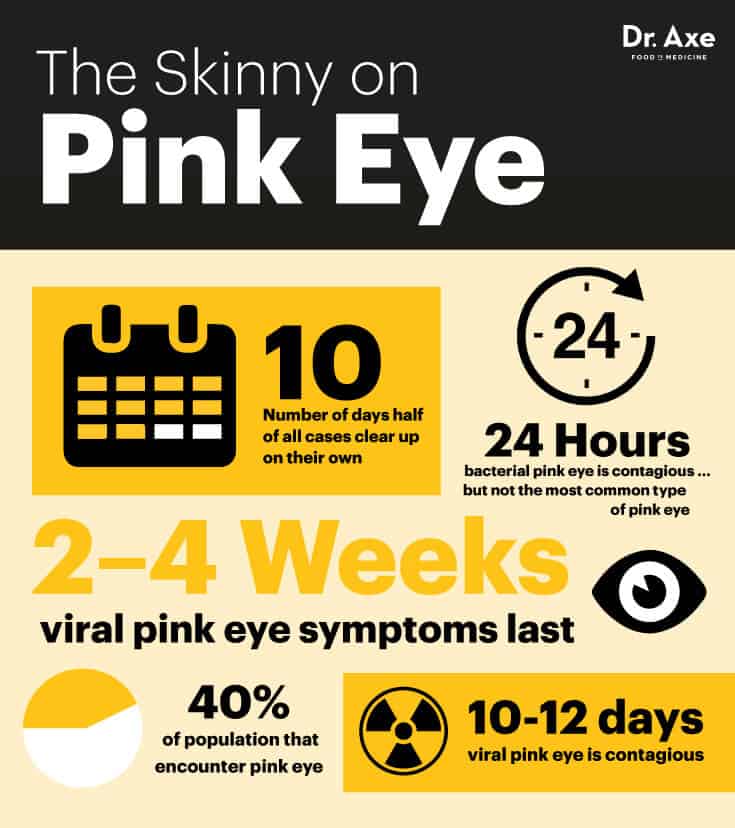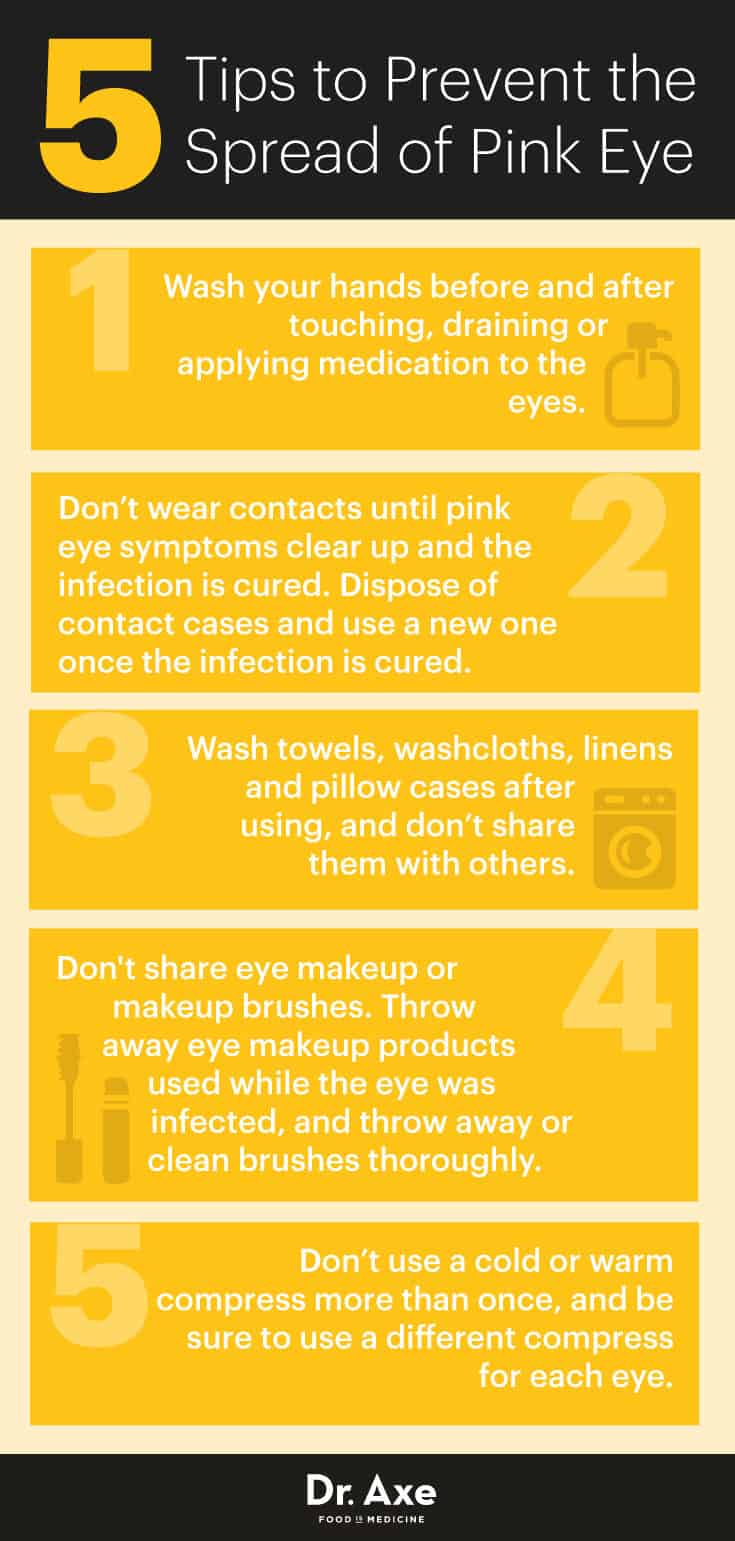This Dr. Axe content is medically reviewed or fact checked to ensure factually accurate information.
With strict editorial sourcing guidelines, we only link to academic research institutions, reputable media sites and, when research is available, medically peer-reviewed studies. Note that the numbers in parentheses (1, 2, etc.) are clickable links to these studies.
The information in our articles is NOT intended to replace a one-on-one relationship with a qualified health care professional and is not intended as medical advice.
This article is based on scientific evidence, written by experts and fact checked by our trained editorial staff. Note that the numbers in parentheses (1, 2, etc.) are clickable links to medically peer-reviewed studies.
Our team includes licensed nutritionists and dietitians, certified health education specialists, as well as certified strength and conditioning specialists, personal trainers and corrective exercise specialists. Our team aims to be not only thorough with its research, but also objective and unbiased.
The information in our articles is NOT intended to replace a one-on-one relationship with a qualified health care professional and is not intended as medical advice.
8 Natural Treatments for Pink Eye Symptoms
August 10, 2018

Pink eye can be a nasty and uncomfortable infection, but did you know that half of all cases clear up within 10 days without any treatment? That’s because there are many types of pink eye, with the most common pink eye symptoms caused by a viral infection, which can’t be treated with prescribed antibiotics. (1)
Unfortunately, the symptoms of viral and bacterial conjunctivitis are very similar, and doctors generally don’t test to see which germs cause the infection. Thus, they prescribe antibiotic eye drops or creams to every patient, just in case. But this can cause some confusion because patients or parents are advised that the infection is no longer contagious after 24 hours of beginning antibiotics, and they go back to school or work — but that is only true for bacterial pink eye, which isn’t even the most common type of eye conjunctivitis!
The truth is that a home remedy for pink eye like aloe vera gel or neem oil can make pink eye symptoms more tolerable until the infection clears up on its own. Researchers from England and the Netherlands looked at studies on the treatment of conjunctivitis with antibiotics and found that antibiotics helped speed the recovery in 10 out of 100 people within six to 10 days, and 46 out of 100 patients who didn’t use antibiotics no longer had pink eye symptoms within six to 10 days. (2)
What Is Pink Eye?
Pink eye, also called conjunctivitis, is a common eye infection that causes redness, swelling, itching, tearing and a slightly thick, whitish drainage. It’s caused by a virus or bacteria, and it’s very contagious, spreading from person to person easily — making this a common condition.
Pink eye symptoms caused by bacteria typically clear up within 10 days without treatment, and viral pink eye symptoms go away after two to four weeks. During that time, the front of the eyes are swollen and tender, and the eyelids may burn or itch. Ongoing or chronic infections can last longer than four weeks. (3)
Viral conjunctivitis is the most common cause of pink eye, and it usually doesn’t require treatment. Bacterial eye conjunctivitis is the second most common cause of pink eye, and uncomplicated cases are typically resolved with prescribed topical antibiotics. (4)
Symptoms
Pink eye symptoms begin to appear when the small blood vessels of the conjunctiva (the transparent membrane in the eye that lines the eyelid and covers the white part of the eyeball) become inflamed and cause the whites of the eye to appear pink or red.
If you go to see a doctor, he or she will first look for the typical pink eye symptoms. Your eyes and eyelids will then be examined to find or rule out any possible injuries or external irritants. It’s difficult to determine the cause of pink eye based only on the signs and symptoms, so a sample of the eye discharge may be taken to determine what type of germs are causing the infection. Pink eye can be the result of several issues: a virus, bacteria, an allergy, an irritant, or a sexually transmitted disease like chlamydia and gonorrhea. (5)
Bacterial pink eye may develop when bacteria enters the eye or the area around the eye. The infection typically lasts two to four days with antibiotic treatment or seven to 10 days without antibiotics.
Bacterial pink eye symptoms include:
- Redness in the white of the eyes
- Tearing
- A burning sensation in the eyes
- Eye pain, including mild pain and soreness in the conjunctiva
- Yellow-green discharge or drainage from the eye that may cause the eyelashes to stick together and form a crust during the night
- Swelling of the upper eyelid, making the lid appear droopy
Viral conjunctivitis has similar symptoms to bacterial pink eye, but the eyes typically secrete a more watery fluid. Viral pink eye is typically caused by adenovirus, but other viruses, such as herpes simplex, varicella zoster, picornavirus, poxvirus and HIV may also be the cause of the infection. Viral conjunctivitis usually resolves itself within two to four weeks, and it cannot be cured by antibiotics. It also remains contagious as long as the eyes are red, usually between 10–12 days.
Pink eye can also be caused by an allergy or irritation in the eye, and it’s encountered in up to 40 percent of the population. Allergic conjunctivitis affects both eyes, as opposed to viral or bacterial pink eye that can affect only one or both eyes. Allergic pink eye is the eye’s response to an allergy-causing substance, such as pollen, animal hair or house dust mites.
The body produces an antibody called immunoglobulin, which triggers mast cells in the mucous lining of the eyes and releases inflammatory substance, such as histamines. The red or pink eyes are a symptom of the histamine, which stimulates the dilation of blood vessels, irritates the nerve endings and increases the secretion of tears. That’s why pink eye is one of the symptoms of histamine intolerance. Allergic pink eye symptoms also include signs of a respiratory condition, like sneezing and a runny nose.
Conjunctivitis resulting from eye irritation is not an infection, and it usually clears up within a day or two. If an irritant (such as dust and dirt) or chemical splashes into the eye, we usually flush it out and clean the eye, which can cause redness and a mucus discharge. The eyes may also be watery and itchy until the irritation has passed.
Chlamydial conjunctivitis is a sexually transmitted disease that’s spread through hand-to-eye transmission of infected genital secretions. It’s a type of bacterial conjunctivitis, and it’s caused by chlamydia trachomatis. Many people who display chlamydial conjunctivitis symptoms have no genital symptoms of the sexually transmitted disease, although most of them have a genital infection as well. (6) The symptoms are similar to viral and bacterial pink eye, including a mucus discharge, tearing, crusting lashes, and swollen or inflamed eyelids.
Gonorrhea is another sexually transmitted disease that can cause pink eye when the bacteria spreads from the genitals to the eyes — this is called gonococcal keratoconjunctivitis. This can be a serious infection that leads to vision loss if not treated early on. (7) Conjunctivitis caused by chlamydia and gonorrhea requires systemic treatment in addition to topical antibiotics.
If you or a loved one is experiencing poor vision, increased sensitivity to light, the feeling that there is something in the eye or a severe headache together with nausea, there may be a more serious problem and you should reach out to a health care provider.
However, if you experience flashes and floaters in the eye, those are more likely the result of age rather than pink eye symptoms.
Related: How to Get Rid of Eye Boogers

8 Home Remedies for Pink Eye Symptoms
1. Tulsi
Tulsi, also known as holy basil, is known for its healing power. It has anti-inflammatory and soothing properties that protect the eyes from environmental damage and free radicals. It also has the power to fight viral, bacterial and fungal infections in the eyes.
Soak tulsi leaves in boiled water for 10 minutes. Then use the water as an eyewash, or soak a clean cotton pad or washcloth in the water and use it as a warm compress. (8)
2. Green Tea
The bioflavonoids present in green tea — like matcha green tea — relieve irritation and inflammation caused by pink eye while fighting bacterial and viral infections. Dip a green tea bag in boiled water and place it on the infected eye once it’s cool enough to touch. Or make a cup of green tea and soak a clean washcloth in it to create a warm compress. (9)
3. Aloe Vera Gel
Components in aloe vera gel, such as aloin and amodin, have antibacterial and antiviral properties. Some other important aloe vera benefits are its ability to reduce inflammation and speed up healing.
Once you notice the signs of pink eye, place aloe vera gel around the eye and eyelid. A 2012 study published in Pharmaceutical Biology found that aloe vera extracts can be used on human corneal cells safely. Researchers discovered that aloe vera extracts may be used in eye drops to treat inflammation and other ailments of external parts of the eye. (10)
4. Turmeric
Turmeric has healing compounds, and it reduces inflammation. It also has antibacterial properties and can relieve pink eye symptoms when used topically. Add 2 tablespoons of turmeric powder to 1 cup of boiled water. Soak a clean cotton pad or washcloth in the mixture and use it as a warm compress. (11)
5. Neem Oil
Neem oil relieves irritated skin with its soothing and gentle properties. It also has anti-inflammatory and antibacterial components that can relieve the symptoms of conjunctivitis. Wipe neem oil around the eye and eyelid before going bed for pink eye relief. (12)
6. Colloidal Silver
One of the many colloidal silver benefits is its prompt action against a pink eye infection. When applied on the infected eye, the tiny silver colloids pick up the infected cells by attracting them electromagnetically and sending them into the bloodsteam to be eliminated. Unlike prescription antibiotics that are only able to treat specific classes of bacteria, colloidal silver is effective regardless of what may causing the infection. (13a)
7. Make a Poultice
I created a home remedy for pink eye that combines raw honey with herbs to provide significant relief of pink eye. Honey has antimicrobial properties while chamomile, fennel and calendula aid in soothing.
8. Breastmilk?
The nutrition in breast milk is off the charts and many generations have used breast milk to treat their children’s eye infections. However, for bacteria-caused pink eye, evidence shows that breast milk of the mother is unlikely to be effective against the bacteria that cause this infection. (13b)
Prevent the Spread
Pink eye is extremely contagious, so it’s important that you’re careful not to spread the infection to the other eye or to someone else. Be sure to wash your hands after wiping your eyes and throughout the day. Because a common pink eye symptom is itchiness, we tend to keep our fingers around the eye. We also use our hands to wipe drainage and then touch the other eye or an object, thereby spreading the viral or bacterial infection.
When drainage is cleared away from the eye, throw away the tissue or wipe right away so the bacteria or virus does not travel. If washcloths are used to clean the eye, put them in the dirty laundry pile right away so no one else uses them.
In order to prevent the spread of pink eye, follow these simple tips:
- Wash your hands before and after touching, draining or applying medication to the eyes.
- Don’t wear contact lenses until the pink eye symptoms clear up and the infection is cured. Dispose of contact cases, and use a new one once the infection is cured.
- Wash towels, washcloths, linens and pillow cases after using, and do not share them with others.
- Don’t share eye makeup or makeup brushes. It’s best to throw away eye makeup products that were used while the eye was infected and throw away or clean brushes thoroughly.
- Do not use a cold or warm compress more than once, and be sure to use a different compress for each eye.

Causes
The risk of developing pink eye increases if you’re exposed to someone infected with the viral or bacterial form of conjunctivitis. Pink eye caused by bacteria is contagious for as long as the symptoms appear, and it remains contagious until there is no longer a mucus discharge coming from the eye or until 24 hours after antibiotics started.
Viral pink eye, on the other hand, is contagious before symptoms appear and can remain spreadable as long as the symptoms last. Many patients are given antibiotics to treat all forms of pink eye, even those caused by a virus. Then the patient returns to school or work after 24 hours, but the infection is still highly contagious.
Using contact lenses may also increase the risk of developing pink eye because the virus or bacteria may grow on the lenses, which are used day after day. Contact solution does not kill the infection, so lenses should be thrown out after a pink eye diagnosis and new ones should be used only after the infection has been cured. Contact lenses also increase the risk of the infection spreading to the cornea (called keratitis), which only happens to about three out of 10,000 people who wear contact lenses.
Being exposed to an irritant or something that causes an allergy, such as pollen, also increases the risk of developing pink eye symptoms. Also, if the foreign body such as a wood splinter is not removed from the eye, this may cause persistent irritation and lead to conjunctivitis.
Conventional Treatment
Eye drops or ointments that contain antibiotics are often given as a pink eye treatment just in case it is a bacterial infection — however, pink eye is more commonly caused by a virus, and antibiotics have no effect on viruses. If the infection is viral, only the symptoms can be treated. Applying a cold or warm compress and using non-antiobiotic eye drops are common remedies for viral infections.
Antihistamines and mast cell stabilizers are commonly used to treat allergic conjunctivitis. Antihistamines are drugs that are taken to relieve allergy symptoms. There are special precautions that should be taken when using antihistamines, especially if you have glaucoma, an enlarged prostate, an overactive thyroid, heart disease, high blood pressure or diabetes. Some side effects of antihistamines include dry mouth, dizziness, nervousness, blurry vision and decreased appetite.
Sedation, the most common adverse effect of antihistamine agents, occurs in 10 percent to 25 percent of users. According to a review published in the Journal of Allergy and Clinical Immunology, drowsiness from antihistamines has been attributed to the blockage of central histaminergic receptors in the brain. (14)
Mast cell stabilizing drugs slow down or stop the release of allergic mediators from mast cells, thereby preventing the release of histamines and related mediators. To treat conjunctivitis symptoms, mast cell stabilizers are available as eye drops. The issues with these types of medications are that they can be expensive and require frequent doses. (15)
Final Thoughts
- Half of all cases clear up within 10 days without any treatment.
- The most common pink eye symptoms caused by a viral infection, which can’t be treated with prescribed antibiotics.
- Viral pink eye symptoms go away after two to four weeks.
- Viral conjunctivitis is the most common cause of pink eye, and it usually doesn’t require treatment. Bacterial conjunctivitis is the second most common cause of pink eye, and uncomplicated cases are typically resolved with prescribed topical antibiotics.
- Bacterial pink eye symptoms include redness in the white of the eyes, tearing, a burning sensation in the eyes, eye pain (soreness in the conjunctiva), yellow-green discharge or drainage from the eye that may cause the eyelashes to stick together and form a crust during the night, and swelling of the upper eyelid, making the lid appear droopy.
- The best home remedies for pink eye are tulsi, green tea, aloe vera gel, turmeric, neem oil and colloidal silver.
Follow these steps to prevent the spread of pink eye:
- Wash your hands before and after touching, draining or applying medication to the eyes.
- Don’t wear contact lenses until the pink eye symptoms clear up and the infection is cured. Dispose of contact cases, and use a new one once the infection is cured.
- Wash towels, washcloths, linens and pillow cases after using, and do not share them with others.
- Don’t share eye makeup or makeup brushes. It’s best to throw away eye makeup products that were used while the eye was infected and throw away or clean brushes thoroughly.
- Do not use a cold or warm compress more than once, and be sure to use a different compress for each eye.


